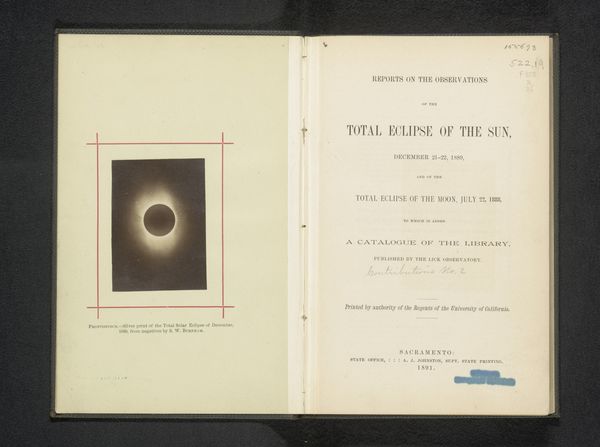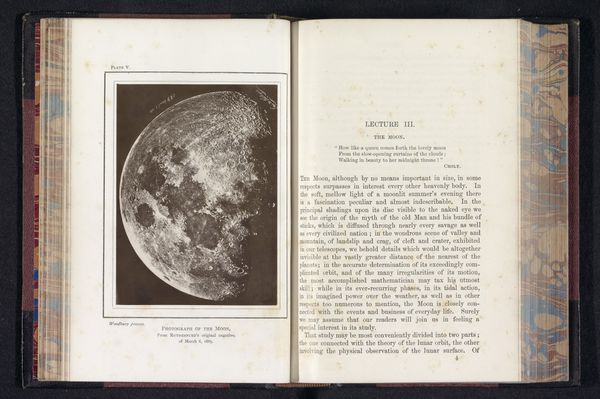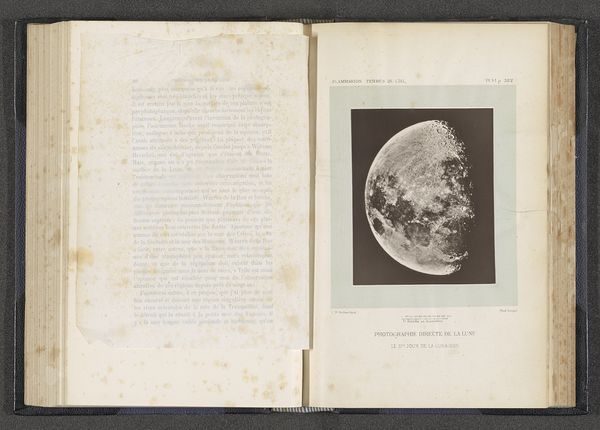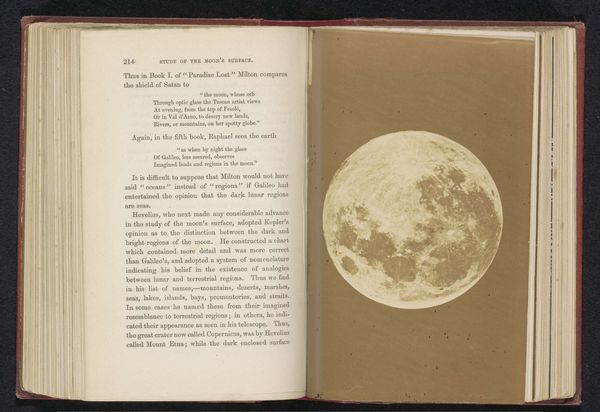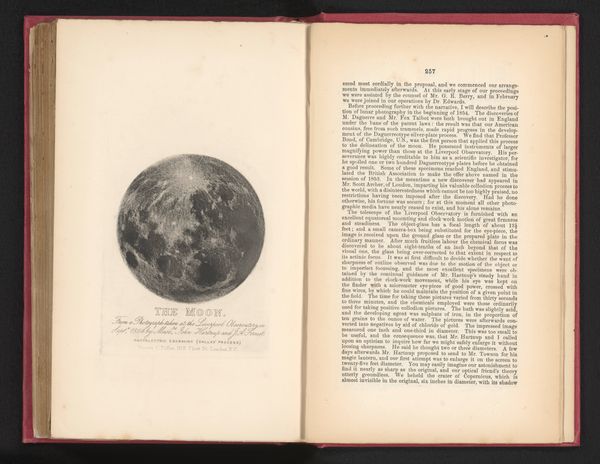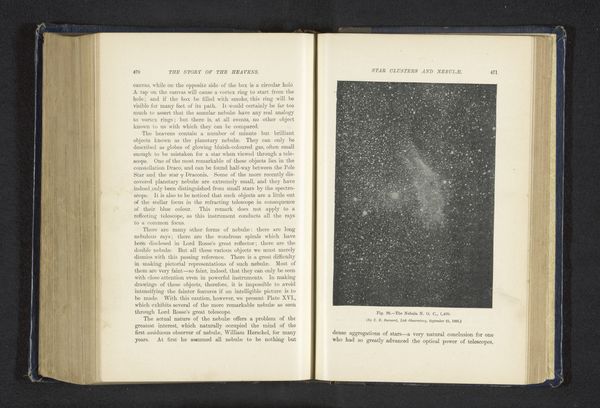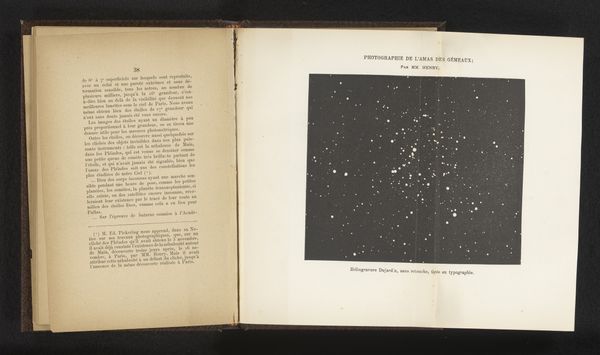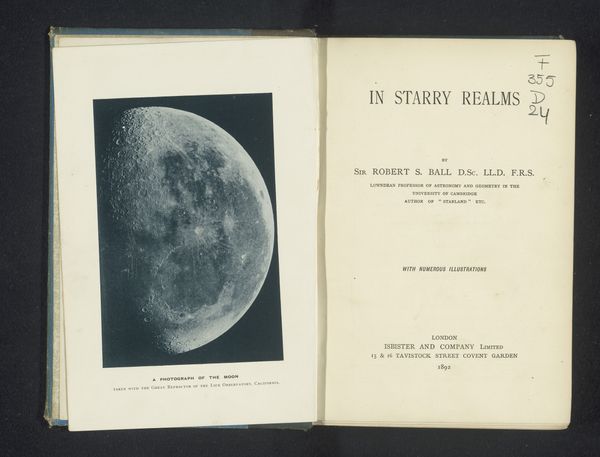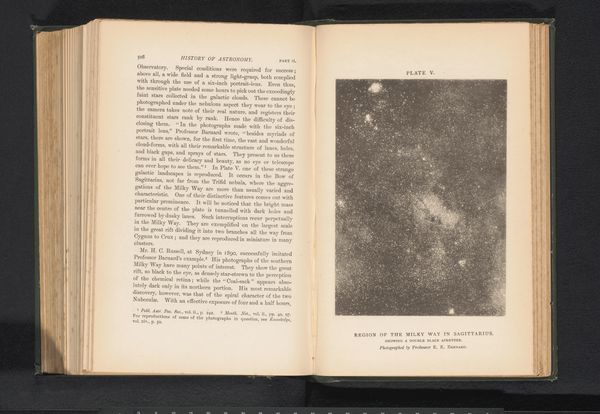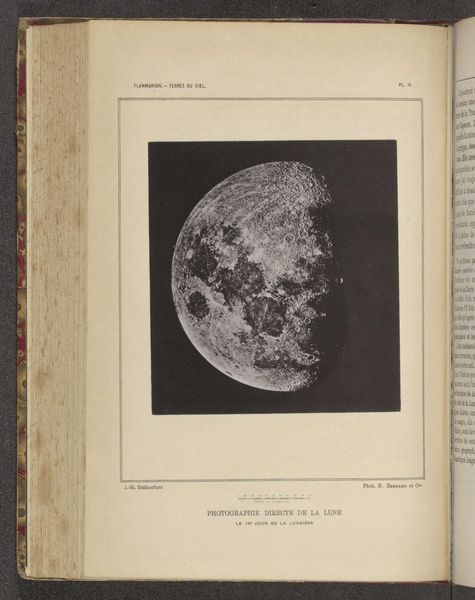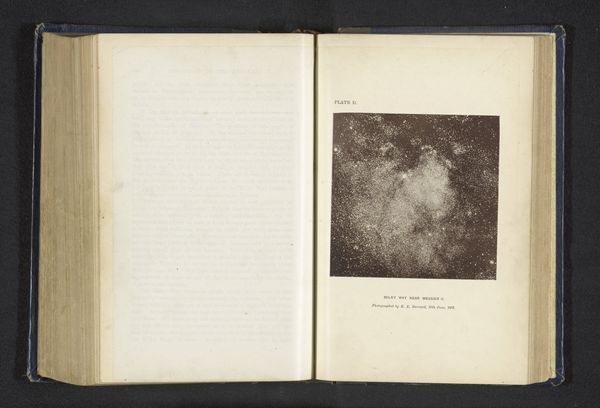
#
portrait
#
aged paper
#
homemade paper
#
16_19th-century
#
paper non-digital material
#
paperlike
# print
#
book
#
sketch book
#
personal journal design
#
personal sketchbook
#
journal
#
geometric
#
history-painting
#
paper medium
#
sketchbook art
Dimensions: height 229 mm, width 152 mm, thickness 49 mm
Copyright: Rijks Museum: Open Domain
Here is the frontispiece to Robert Ball's "Story of the Heavens," published in 1885, showing the planet Saturn in exquisite detail. The ringed planet holds a powerful place in our collective imagination. Saturn, named after the Roman god of agriculture, signifies cyclical renewal, transformation, and also restriction. This idea echoes in ancient depictions of the Ouroboros, the snake eating its own tail, symbolizing the eternal return. The rings themselves might be seen as a crown, an ancient symbol of power and divine authority, yet here, it encircles a celestial body, suggesting a more cosmic, less earthly dominion. There is a sense of awe when we see the gas giant. It speaks to our subconscious fascination with the infinite, the unknowable. The emotional pull of these images, much like ancient star charts, is a primal echo of humanity’s first attempts to understand our place in the cosmos. Saturn becomes not just a planet, but a mirror reflecting our deepest questions and fears. The image reminds us that while we strive for knowledge, some symbols retain their evocative power across millennia, evolving yet eternally resonating.
Comments
No comments
Be the first to comment and join the conversation on the ultimate creative platform.
